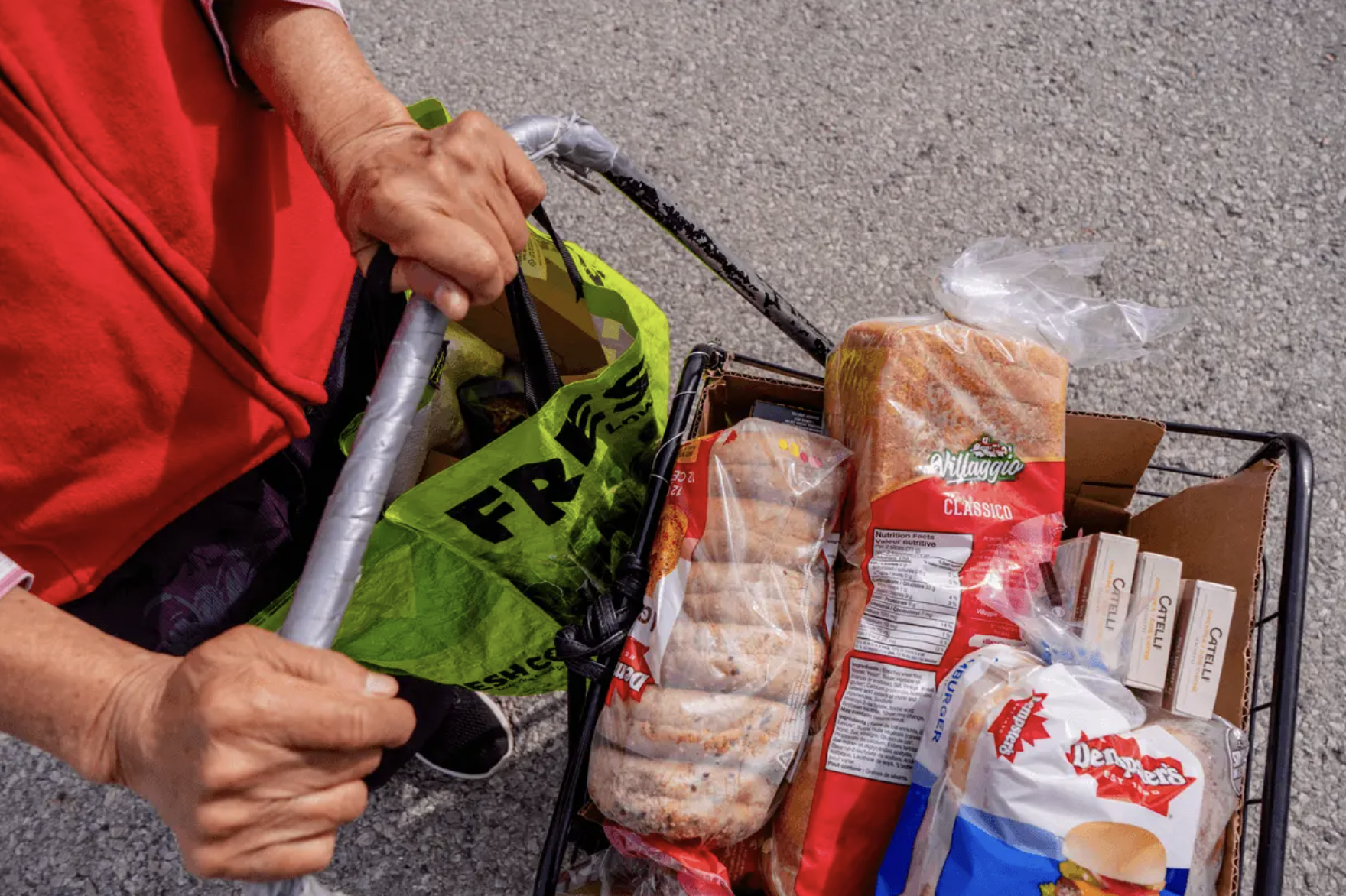TORONTO (CCN) — It took 38 years for Toronto food banks to experience over one million client visits in a single year.
Only five additional years were required for food bank visits in Canada’s largest metropolis to eclipse 4.1 million from April 1, 2024, to March 31, 2025, according to the “Who’s Hungry 2025” report co-released by Daily Bread Food Bank and North York Harvest Food Bank on Oct. 27. This study features representation from 73 food banks and drop-in-meal programs.
Now, 10 per cent of Torontonians rely on food banks compared to five per cent in 2022, the report says. Of the 1,890 individuals surveyed, 54 per cent indicated they rely on this service three or more times in a month.
Neil Hetherington, CEO of Daily Bread Food Bank, hopes these shocking numbers mobilize action.
“My hope is people will read those numbers and understand that there is a family and a story behind every number,” said Hetherington. “Collectively, we can advocate for a country where everybody can thrive in their community.”
Hetherington plans to be in Ottawa on Nov. 4, when the federal government unveils its budget bill, to meet with various ministers. He routinely liaises with politicians about the statistics and presents potential policy alternatives.
The former CEO of Habitat for Humanity shared with The Catholic Register two measures he would like to see in the budget to immediately alleviate the strain on food banks.
“I want to see an investment in the Canada Disability Benefit,” said Hetherington. “Right now, it’s only $200 a month. I want to make sure that it increases beyond the inflation to a level where nobody should be in deep poverty if they’re on disability. I would like the federal government to make sure they continue funding provinces and cities getting rent supplements out to the community. Those two things will ensure a decrease in the lineups at food banks.”
Food Banks Canada also unveiled its 2025 “HungerCount” report on Oct. 27. This study provides a nationwide snapshot account of food bank usage — 2,725 establishments provided data — during the month of March each year.
According to the 2025 “HungerCount,” there were nearly 2.2 million visits to Canadian food banks, the highest number in history, a five-per-cent rise from 2024 and a 99.4-per-cent spike from 2019. One-third of the monthly visitors are children, equating to 712,000, a dramatic rise from the 300,000 registered in 2019.
Nearly one in five visitors (19.4 per cent) report employment as their main source of income, up from 12 per cent in 2019.
Richard Matern, the lead author and researcher of the 2025 “HungerCount,” said the numbers reinforce the impact the past few years have had on people, especially Canadians struggling to make ends meet.
“You look at the cost of housing and the cost of food, which have both increased by over 25 per cent in the last four years, whereas wages have been around, I think, 16, 17 per cent,” said Matern. “Those two costs alone have far outpaced wages. You’re realizing how much people’s purchasing power has declined. It gives a time-sensitive real-life example of how the housing and food costs impact to the lowest-income households.”
Like Hetherington, Matern said Food Banks Canada would like to see “an increase in the adequacy and accessibility” of the Canada Disability Benefit. He also floated two additional proposals.
“We would look for groceries and essentials benefit, which we’re calling for in our report, a benefit model similar to the GST credit, targeted to lower-income households to better help them afford food,” said Matern. “And closing the gaps in our EI system (by) expanding coverage to people who are part-time casual or gig workers.”
An Oct. 27 Department of Finance press release previewing the budget stated there will be “temporary flexibilities to the Employment Insurance (EI) Work-Sharing Program to provide EI benefits to eligible employees who agree to work reduced hours due to a decrease in business activity beyond their employer’s control.” This measure, costed at $370 millon over five years and $18.5 million ongoing, purportedly “helps employers and employees avoid layoffs while supplementing reduced income with EI benefits.”
The budget is also expected to enact “temporary EI measures that enhance income supports for Canadian workers whose jobs have been impacted by the economic uncertainty caused by foreign tariffs.” A total of $3.6 billion is designated for this line item over three years.
Visit www.dailybread.ca to read “Who’s Hungry 2025” and foodbankscanada.ca to review “HungerCount.”




